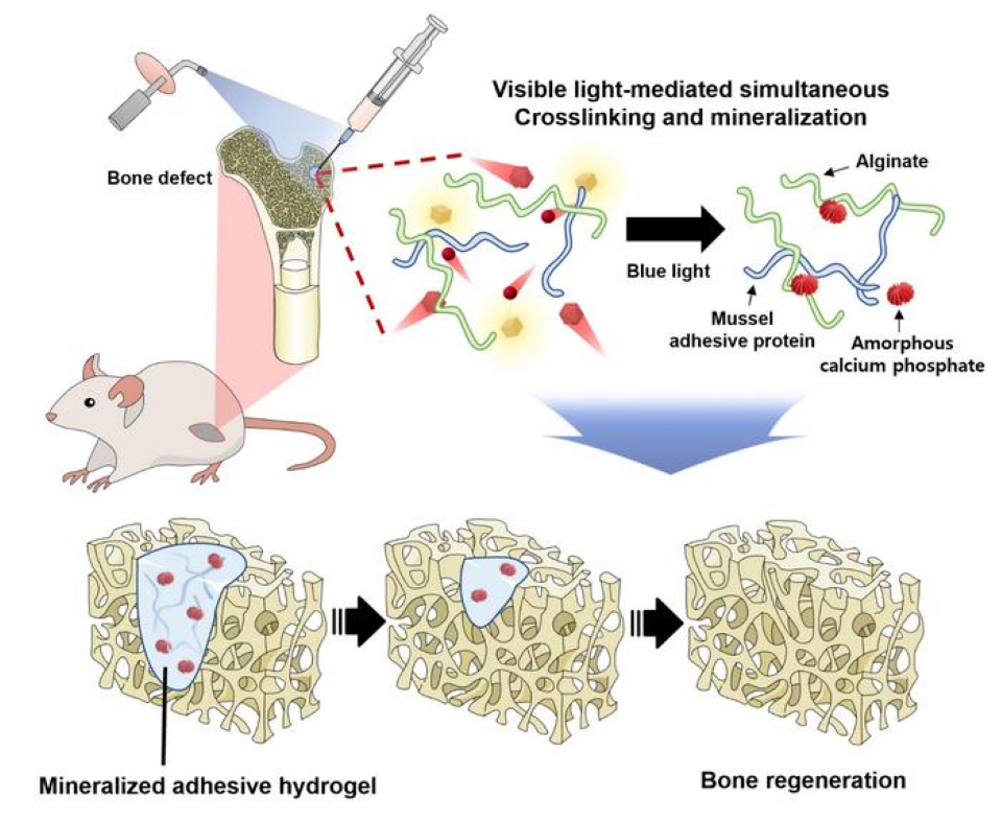The advance from Pohang University of Science and Technology (POSTECH) was led by Professor Hyung Joon Cha, along with Dr Jinyoung Yun and student Hyun Taek Woo. Their research is detailed in Biomaterials.
Conventional treatments for bone defects often involve bone grafts combined with serum or bioadhesives to fill the defect. According to POSTECH, existing injectable hydrogels face challenges such as difficulty in maintaining their shape within the body and limited adhesive strength. Moreover, traditional methods using bone grafts with adhesive materials often fail to achieve simultaneous ‘bone regeneration’ and ‘adhesion’.
Now, the POSTECH team has introduced a novel hydrogel system employs visible light to facilitate cross-linking, where the main components of the hydrogel bond and harden, and to simultaneously boost mineralisation where bone-building minerals like calcium and phosphate form within the hydrogel.
Earlier studies have explored the use of light in similar applications, but they encountered issues such as requiring separate preparation and mixing of bone grafts and adhesive materials, plus weak bonding of the main components, which can degrade over time.
The newly developed hydrogel precursor comprises alginate (natural polysaccharide derived from brown algae), RGD peptide-containing mussel adhesive protein, calcium ions, phosphonodiols, and a photoinitiator.

According to the team, the coacervate-based formulation, which is immiscible in water, ensures that the hydrogel retains its shape and position after injection into the body. Upon visible light irradiation, cross-linking occurs, and amorphous calcium phosphate, which functions as a bone graft material, is simultaneously formed. This eliminates the need for separate bone grafts or adhesives, enabling the hydrogel to provide bone regeneration and adhesion.
In experiments using animal models with femoral bone defects, the hydrogel was successfully injected, adhered accurately, and effectively delivered components essential for bone regeneration.
In a statement, Professor Cha said: "The injectable hydrogel system for bone regeneration developed by our research team represents an innovative alternative to conventional complex treatments for bone diseases and will greatly advance bone tissue regeneration technology."










Deep Heat: The new technologies taking geothermal energy to the next level
No. Not in the UK. The one location in the UK, with the prospect of delivering heat at around 150°C and a thermal-to-electrical efficiency of 10-12%,...